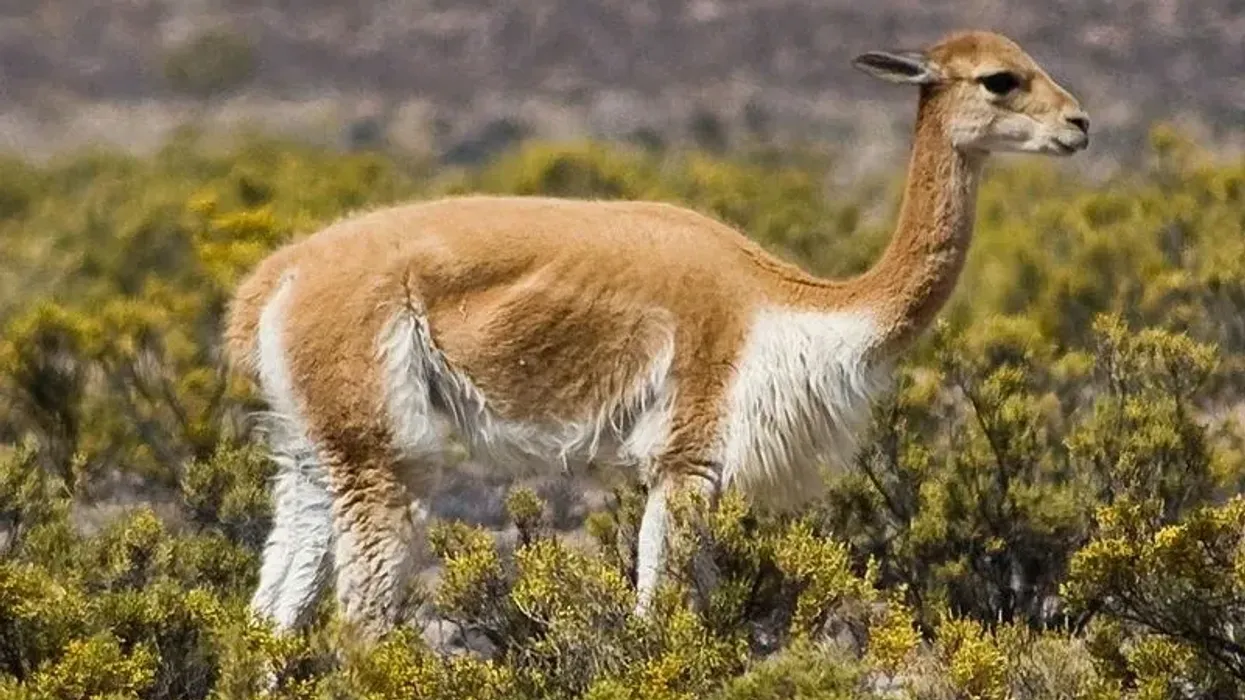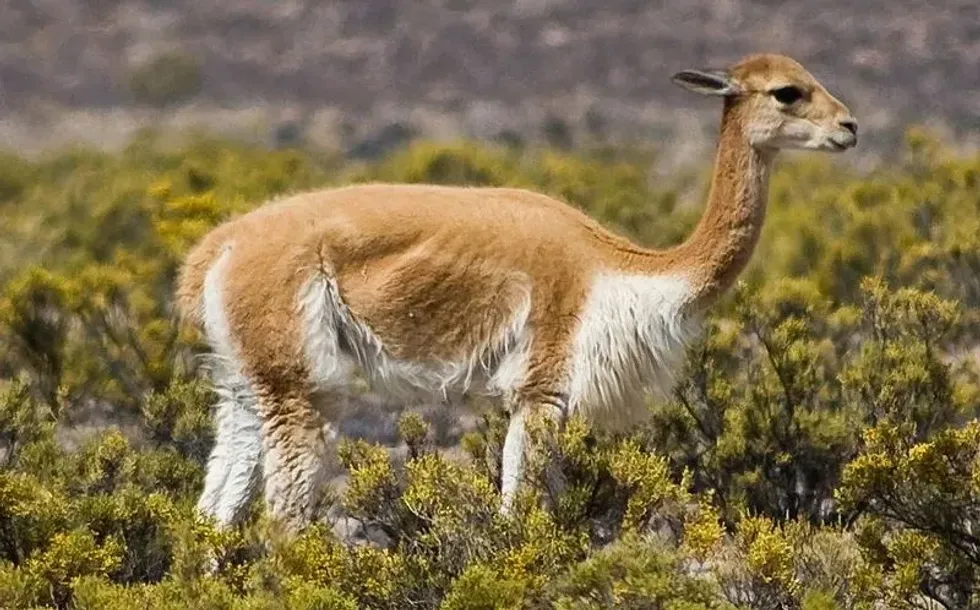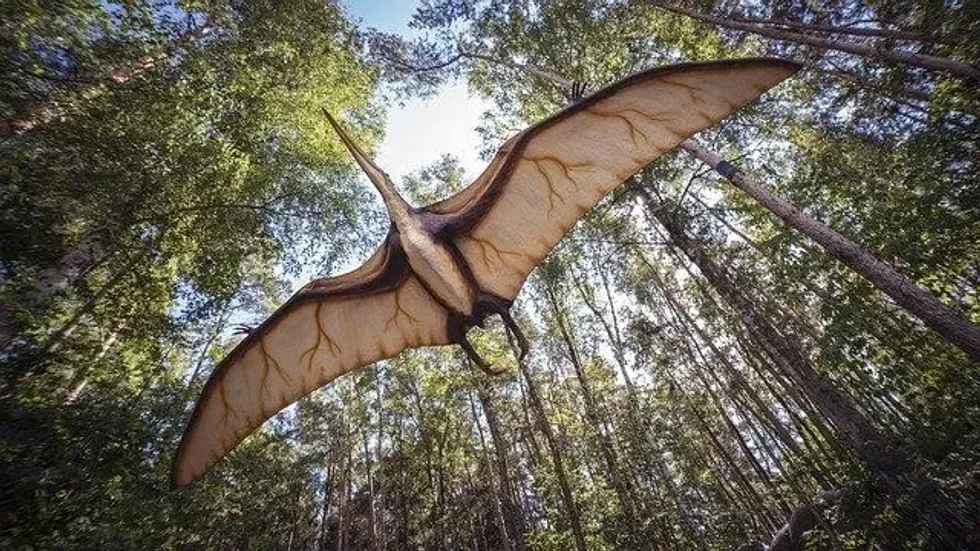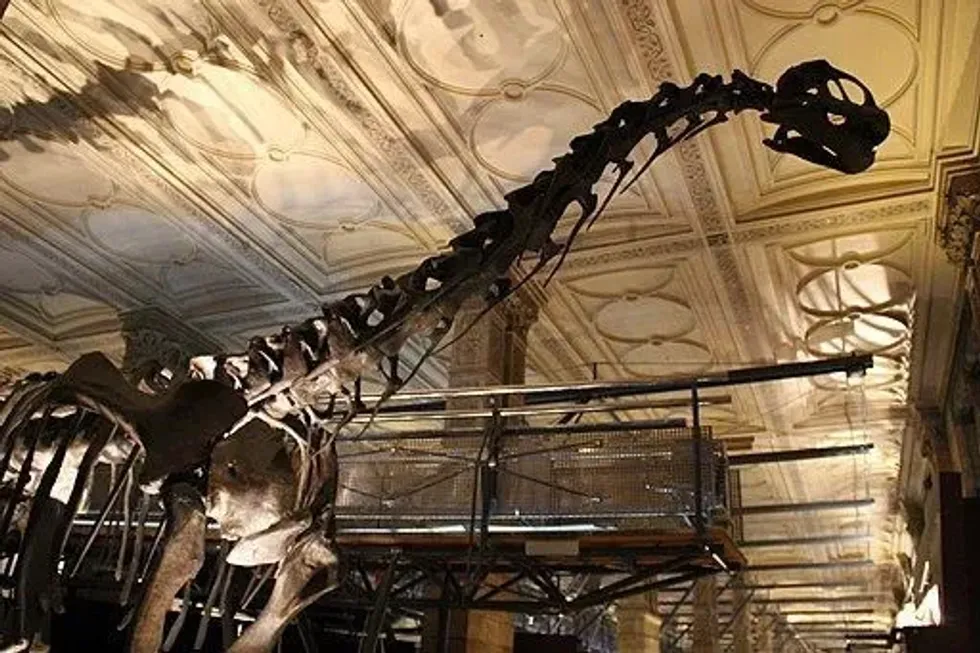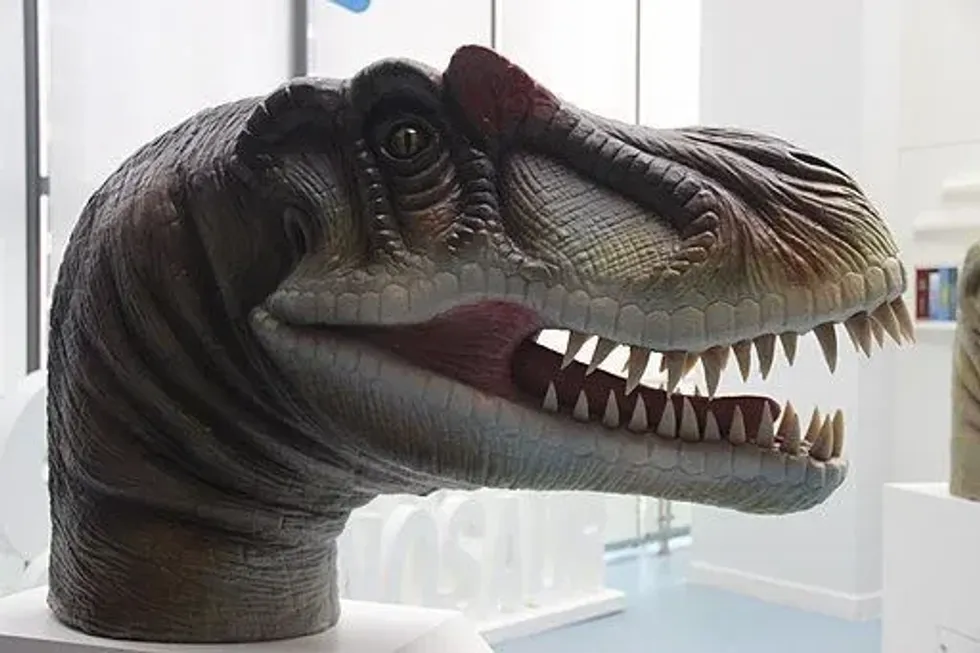Where does the rarest, finest, and most exclusive wool in the world come from? To find out, read ahead, and explore this impressive information on a camelid from South America called Vicuña.
The Vicuña is the smallest of the camelids found in the South American countries of Peru, Chile, Bolivia, and Ecuador. The Vicuña belongs to the camel family Camelidae.
Their scientific name is Vicugna vicugna. The ancestry of the Alpaca species can be traced to the Vicuña. They are herbivorous animals feeding majorly on grasses.
Poaching, loss of habitat, and global warming impact the population of Vicuña in its habitat. They have a shiny and soft coat that is sheared to get the most expensive wool in the world. The wool is rare because the Vicuna produces only 1.1 lb of wool per year.
The wool fetches up to $3000 per yard. The efforts from government agencies allow shearing of wool from the animal and releasing the animal back into the wild. This ensures the conservation of the population of Vicuna.
Are you looking for similar exciting content? We bring you more fun-filled content on llamas and spiral-horned antelope right here.
Vicuña Interesting Facts
What type of animal is a vicuña?
Vicuñas are the smallest camelids seen in the Andes mountain in South America. These animals are famous worldwide for the rarity and exclusivity of their wool. A few DNA studies indicate that the Alpacas have the Vicuna as their wild ancestor.
The history of these animals is traced back to a thousand years ago. Llama, Vicuña, Alpaca, and Guanaco are the four camelid species found in the wild in South America. The color of their body differentiates Vicuña llamas.
The history of the Vicuna is traced back to the Inca empire in the 13th century, where they were considered a privilege and asset of royalty alone. The Vicuna populations flourished in the Inca times. They were estimated to be two million Vicunas in the wide range of the Andes mountain.
What class of animal does a Vicuña belong to?
The Vicuñas belong to the class Mammalia in the animal kingdom classification. The distinct feature of this class is the presence of mammary glands in females. Other features include the presence of a four-chambered heart, having fur or hair on the body, and sweat glands.
How many Vicuñas are there in the world?
As per an estimation by the International Union for Conservation of Nature (IUCN), the populations of the Vicuñas are numbered at 347,273. These numbers are distributed in the wild habitats of Argentina, Bolivia, Peru, and Chile. With the efforts of various organizations and the government, the populations of these camelids are increasing.
Where does a Vicuña live?
The Vicuna populations are found in the Andes mountain in South America. These animals have their territory spread in countries like Peru, Bolivia, Chile, Argentina, and others. Their biome is grasslands and shrublands in the mountainous regions.
What is a Vicuña's habitat?
The Vicuña's preferred habitat is temperate and polar zones. They choose their territory close to water sources to meet their daily water requirements. They are generally found living at higher altitudes up to 5750 m.
Who do Vicuñas live with?
The Vicuña is a highly social animal and lives in herds of 6-10 members with a dominant male leading the group. Herds comprise the dominant male with few females and the young ones.
The dominant male dictates the range of his family territory and who joins the group. The adults who do not become the pack leader remain solitary or form an enormous herd with 30-150 members.
How long does a Vicuña live?
The lifespan of a Vicuna is 20 years in the wild. The Vicuna population is also reared in many zoos worldwide. The lifespan in captivity is noted at 25 years. Poaching, habitat loss due to human intervention, and climate change are significant threats to its survival.
How do they reproduce?
The dominant male mates with every mature female Vicuna in his herd. The mating period is in March and April for these species of animals. The males and females attain reproductive maturity at the age of two. The females can be active reproductively.
They lie on their chest while mating and the copulation takes place for 10-20 minutes. The gestation period of the Vicuna is 330-350 days. A single young one is given birth to, which becomes independent only after 12-18 months. The young ones are breastfed until 10 months of age.
What is their conservation status?
As per the Internation Union for Conservation of Nature (IUCN) red list classification, the Vicuna population is categorized into the Least Concern section. The Vicuna's population saw a decline from being hunted and due to poaching.
Due to this, the population of this species is well protected by the laws framed by the governments across South America, which mandates strict rules being enforced to harvest and export the wool. The sheared animal count is also registered, and the sheared animal is let back into the wild.
Vicuña Fun Facts
What do Vicuñas look like?
They have a lean body with a long neck and long limbs. The ears of a Vicuna are pointed and long. The head is round and looks tiny compared to its body size. The neck has a bib of yellow-red shade.
The sides of the Vicuna body have a dirty white shade. A small mane measuring around 12 in is seen on its chest. They have long, smooth, and shiny coats.
They have sharp rodent-like incisor teeth with an enamel coating on them. They have large hearts to keep up with the metabolic rates required to be maintained at higher altitudes. Their blood has specialized hemoglobins that have a greater affinity for oxygen.
How cute are they?
These charming and sleek animals make a sight for the beholder with their shy nature. The small head on their extensive body with attentive eyes makes them look very cute. The smoothness of the wool against the graceful movements of their two-toed puffed feet is a delight to watch too.
How do they communicate?
The Vicuna are identified to be good at communication. They relay information employing body postures, specific placement of ears and tails, and other subtle body movements to the animals of their species. They make a distinct high-pitched whistle-like sound to signal its herd of any danger.
The males of the Vicuna species make a particular sound termed as 'orgling' to attract the female Vicuna. Other means are tactile and chemical communication. The male Vicuna will spit at the opponent during a fight. This is their way of showing aggression.
The Vicuna is blessed with good eyesight and perfect hearing sense. Still, they have poor olfactory sense, i.e. the sense of smell is poorly developed for these animals.
How big is a Vicuña?
The Vicuña can measure up to 5 ft in height and 5.9 ft in length. They are much smaller than Guanaco that can grow up to 7 ft in height and 6.6 ft in length.
How fast can a Vicuña run?
The Vicuñas are very swift on their foot, and they have a recorded running speed of 47 km/hr. They are very vigilant animals, and they sprint at an incredible speed when they feel threatened.
How much does a Vicuña weigh?
The Vicuña weighs below 150 lb compared to a Llama which weighs around 440 lb. The Vicuña weighs almost half of a Llama.
What are their male and female names of the species?
There is no specific name assigned to the males and females of this animal species. They are referred to as male Vicuña and female Vicuña. Whereas in general, the camels have specific names for their male and female species. The male camel is termed bull, and the female is termed cow.
What would you call a baby Vicuña?
The baby Vicuna is called crias or a fawn; the term crias is borrowed from the Spanish word cría, referring to baby animals. One of the amusing antics of these camelids is that the young Vicuñas graze while lying down.
What do they eat?
The Vicuna is a herbivore and grazer by design. They graze on the short perennial grasses. The Vicuna also feeds on mosses and other vegetation along with grasses. They are predated by foxes of the Andes mountains and pumas.
The Vicuna is a diurnal animal. They prefer to forage during the daytime and return to their sleeping grounds by night. They have a distinction between the feeding and sleeping territory.
Are they dangerous?
The Vicuna is a timid but alert animal. When faced with any potential threat, it is quick to take the task to its feet and make a run for its life. They do not pose any threat to humans. Hence it is apt to conclude they are not dangerous.
Would they make a good pet?
The Vicuña is predominantly an animal thriving in the wild. These animals are not known to have any history of domestication. There are cited instances where locals use the Vicuna for their traditional rituals. The Vicuna, being a wild animal, thrives ideally in its natural environment.
Did you know...
The Vicuna holds the stature of being the National animal of Peru and appears on the Peruvian National emblem, the Coat of Arms.
Vicuna garments made from Vicuña wool were exclusive to the royalties during the Inca Empire.
Cusco, a city in Peru, is the best place to buy authentic vicuña wool or alpaca wool garments.
Vicuña wool is the rarest and most prized wool worldwide, costing up to $3000 per yard. Vicuña wool is more expensive than cashmere wool which costs around $500.
When are male Vicuñas happiest?
The male Vicuñas are happiest when they are in the company of 5-15 females in the herd. Vicuñas are polygynous by nature and very protective about their clan.
How are Vicuñas adapted to live in varying temperatures?
The habitat of the Vicuñas provides them a dry and hot environment in the day and cool temperatures at night. The body of a Vicuña is adapted to trap heat from the sun during the daytime and utilize it to keep themselves warm at night.
Here at Kidadl, we have carefully created lots of interesting family-friendly animal facts for everyone to discover! Learn more about some other mammals, including reindeer or Addax.
You can even occupy yourself at home by drawing one on our vicuna coloring pages.

